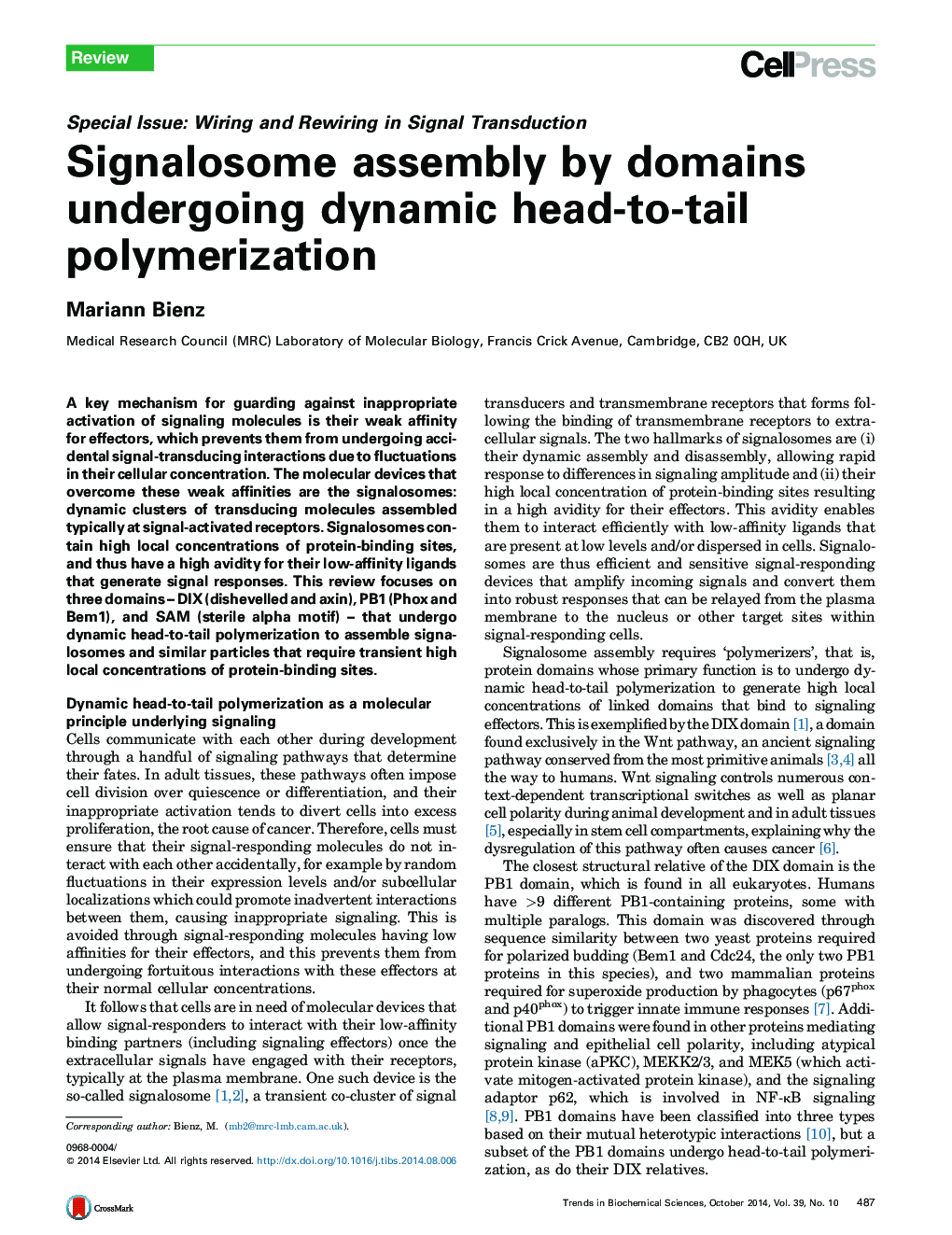| کد مقاله | کد نشریه | سال انتشار | مقاله انگلیسی | نسخه تمام متن |
|---|---|---|---|---|
| 2030631 | 1071225 | 2014 | 9 صفحه PDF | دانلود رایگان |
• Signalosomes are assembled by double-faced domains that undergo dynamic polymerization.
• Transient high local concentrations of signaling molecules are thus achieved.
• Dynamic polymerization is a device for attaining high avidity for signal effectors.
A key mechanism for guarding against inappropriate activation of signaling molecules is their weak affinity for effectors, which prevents them from undergoing accidental signal-transducing interactions due to fluctuations in their cellular concentration. The molecular devices that overcome these weak affinities are the signalosomes: dynamic clusters of transducing molecules assembled typically at signal-activated receptors. Signalosomes contain high local concentrations of protein-binding sites, and thus have a high avidity for their low-affinity ligands that generate signal responses. This review focuses on three domains – DIX (dishevelled and axin), PB1 (Phox and Bem1), and SAM (sterile alpha motif) – that undergo dynamic head-to-tail polymerization to assemble signalosomes and similar particles that require transient high local concentrations of protein-binding sites.
Journal: - Volume 39, Issue 10, October 2014, Pages 487–495
